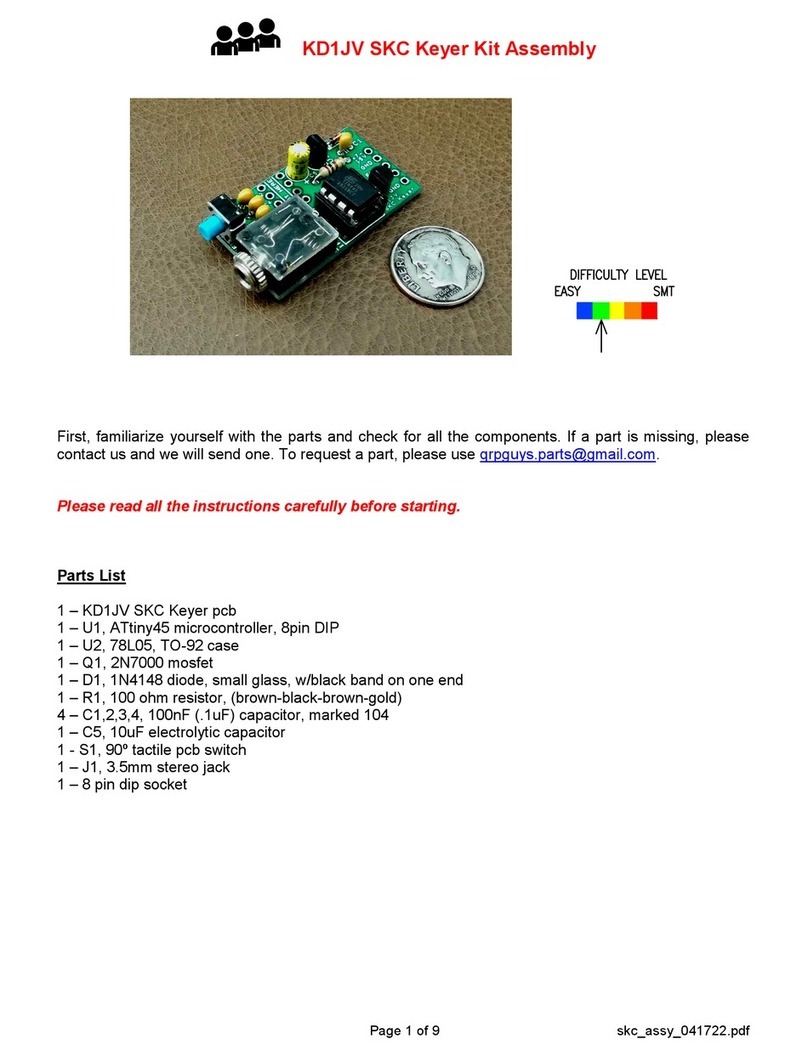
Page 1 of 6 el_sl_assy_021918.pdf
QRPGuys KX Single Lever Mini Paddle
First, familiarize yourself with the parts and check for all the components. If a part is missing, please
Parts List
1 – QRPGuys KX Single Lever Paddle PCB, 5 pieces in all
1 – J1, 2x2 female right angle header
1 – SS paddle leaf, 1.25” long
2 – 4-40 x 3/16”L thumbscrew
1 – 4-40 x 3/8”L SS pan head Phillips screw (used for soldering assembly holding)
2 – 4-40 x 1/2”L SS pan head Phillips screw
2 – 4-40 SS nut
2 – 4-40 brass nut
2 - #4 SS lock washer
2 – #4 SS flat washer
2 – 2-56 x 3/16” SS pan head Phillips screw
2 – 2-56 brass nut
2 - #2 SS lock washer
1 – 4-40 x 1”L pan head screw (used for soldering assembly holding)
1 - 1/2” wide x 2”L plastic shim
1 - 1/2” x 1” vinyl caplug
Even if you have done radio kit assembly before, please read through all the instructions before you start.
This kit is a little different, in that the mechanical components are parts of a printed circuit board. The
instructions give you the scope of the project and an understanding of the techniques we have employed.
You will be assembling the paddle from PCB material, and when assembled, also forms the electrical
connections. There are solder pads and registration marks that must be observed so that when you tack
and solder, it will make a sturdy mechanical and electrical assembly.
The tools you will need are a soldering iron with a small tip, solder, #1 Phillips screwdriver, needle nose
pliers, tweezers for the small hardware, cookie sheet, and a flat surface to work on.























